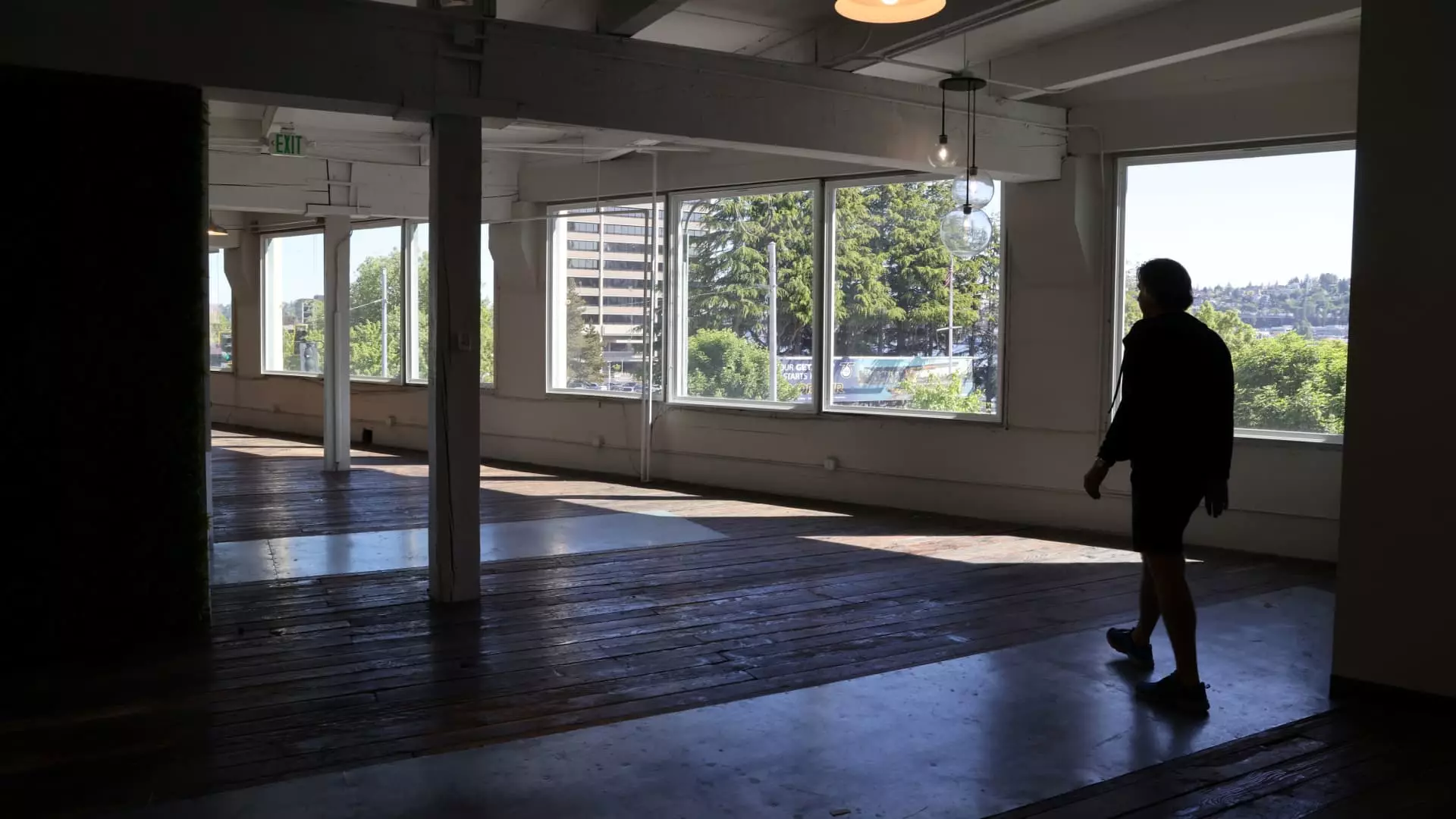The U.S. office market stands at a critical crossroads, redefining itself in response to increasingly complex societal and workplace dynamics. The latest data from CBRE Group underscores a seismic shift in the commercial real estate landscape. For the first time in over two decades, demolitions and conversions of existing office spaces will outpace new developments. It’s a transformative moment—one that suggests a resilience tested by the pandemic’s aftermath. The overall footprint of traditional office space is shrinking, and while this presents challenges, it also signals an opportunity for revitalization in urban environments.
CBRE’s report reveals that by year-end, nearly 23.3 million square feet of office space across the largest 58 U.S. markets is set for demolition or repurposing. This contrasts strikingly with the mere 12.7 million square feet forecasted for new construction. Such figures indicate a motion towards sustainability and adaptability that is long overdue in a workforce increasingly oriented towards remote work. The rising vacancy rates, hovering around a staggering 19%, serve as an indicator of how drastically the workforce has evolved—our expectations of a work-life balance have changed, and office structures designed for yesteryear simply don’t cut it anymore.
The Silver Lining in Lower Vacancies
Despite reports of the staggering vacancy rate, there lies a glimmer of hope—the market is nudging towards recovery. Evidence suggests that more employers are now insisting on in-person attendance, responding to a tightening job market that compels employees to accept whatever offers come their way. This paradoxical recovery amidst high vacancies posits a future where demand may rise amid dwindling supply, potentially leading to stabilization in office rents. It’s a trend that hints at a more cooperative relationship between employers and employees, one where the push for flexibility may eventually give way to a more hybrid model that can honor the need for both in-person collaboration and remote work.
Class A Office Space: The Bright Spot
Notably, even as older office spaces are phased out, Class A office locations seem to be buoyant. This premium segment of the market has shown resilience with rent recovery and heightened leasing activity—up 18% year-over-year—as companies are seeking out modern spaces that accommodate new business models. This adaptive trend is not just fortuitous for landlords; it revolutionizes urban landscapes, breathing fresh life into areas that may have suffered under the pressures of a post-pandemic economy.
The real estate investment trusts (REITs) focusing on prime office spaces are the likely beneficiaries of this burgeoning shift. Companies like Vornado and SL Green are leading the charge, promoting higher-quality developments while vilifying the obsolete models that no longer serve modern business needs. The commentary from CBRE’s Jessica Morin captures the essence of urban revitalization: as outdated spaces are dismantled, neighborhoods can flourish with new uses that resonate more with contemporary life.
Conversion Successes and Ongoing Challenges
Moreover, the ongoing trend of conversion—from office buildings to multifamily residences—is emblematic of a societal shift that values versatility and livability. So far, recent conversions have produced around 33,000 new housing units. This repurposing trend is anticipated to continue, with an additional 85 million square feet earmarked for future conversions. The vision is inspiring; however, developers are met with challenges. The decreasing availability of suitable buildings for conversion and soaring costs of construction materials pose significant hurdles.
The effectiveness of this transformation hinges on a collaborative approach among investors, city planners, and construction firms. Investments in emerging technologies and sustainable practices are crucial. The future outlook remains optimistic, yet pragmatic: balance must be struck to mitigate potential headwinds, ensuring that the evolutionary trends in commercial real estate can endure.
While the office market undergoes this metamorphosis, it is essential to recognize that the very fabric of work culture is evolving alongside it. What we witness is not merely a shift in real estate trends but a broader narrative of adaptation and resilience in the face of uncertainty—a narrative we must support wholeheartedly as we move forward.



Leave a Reply